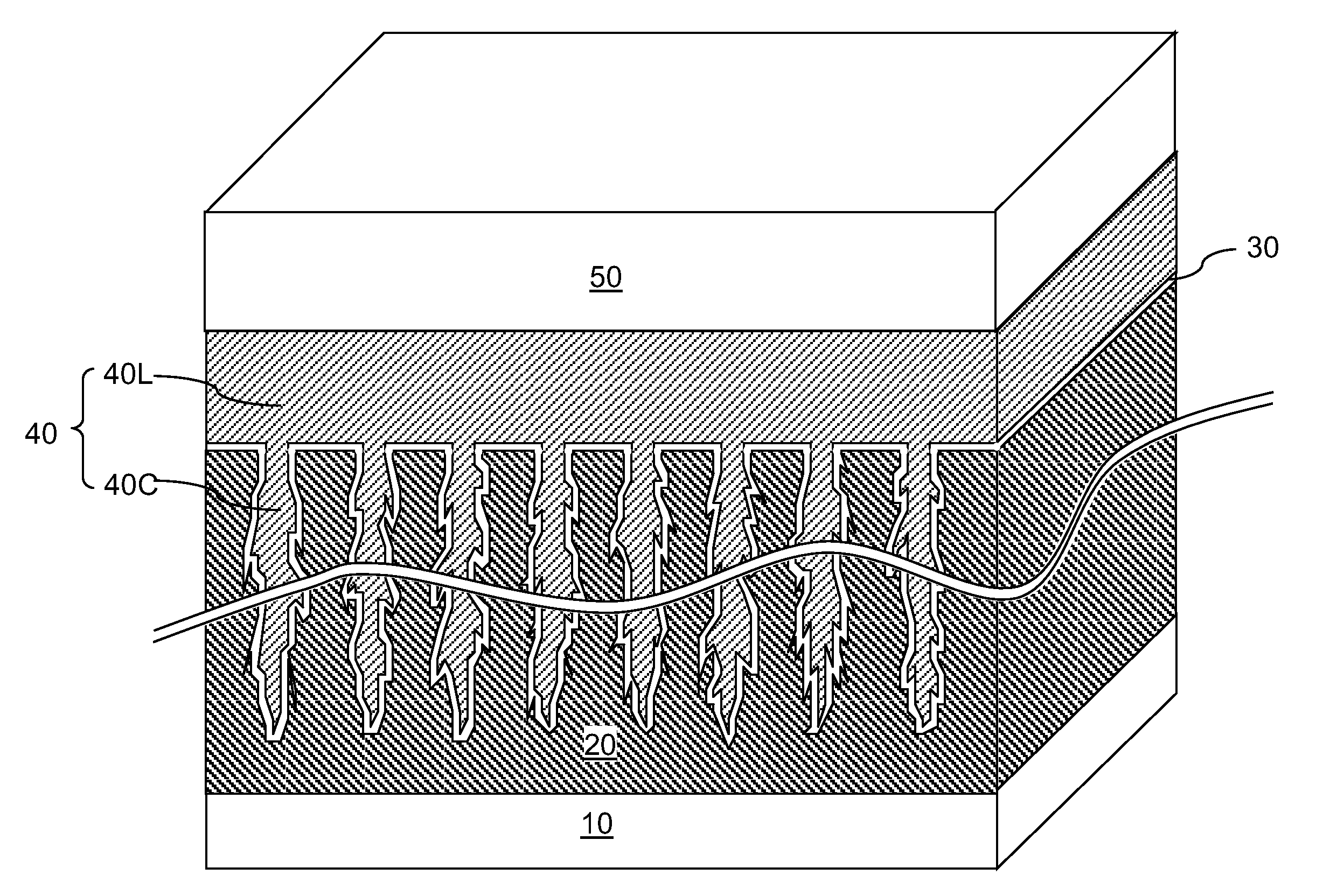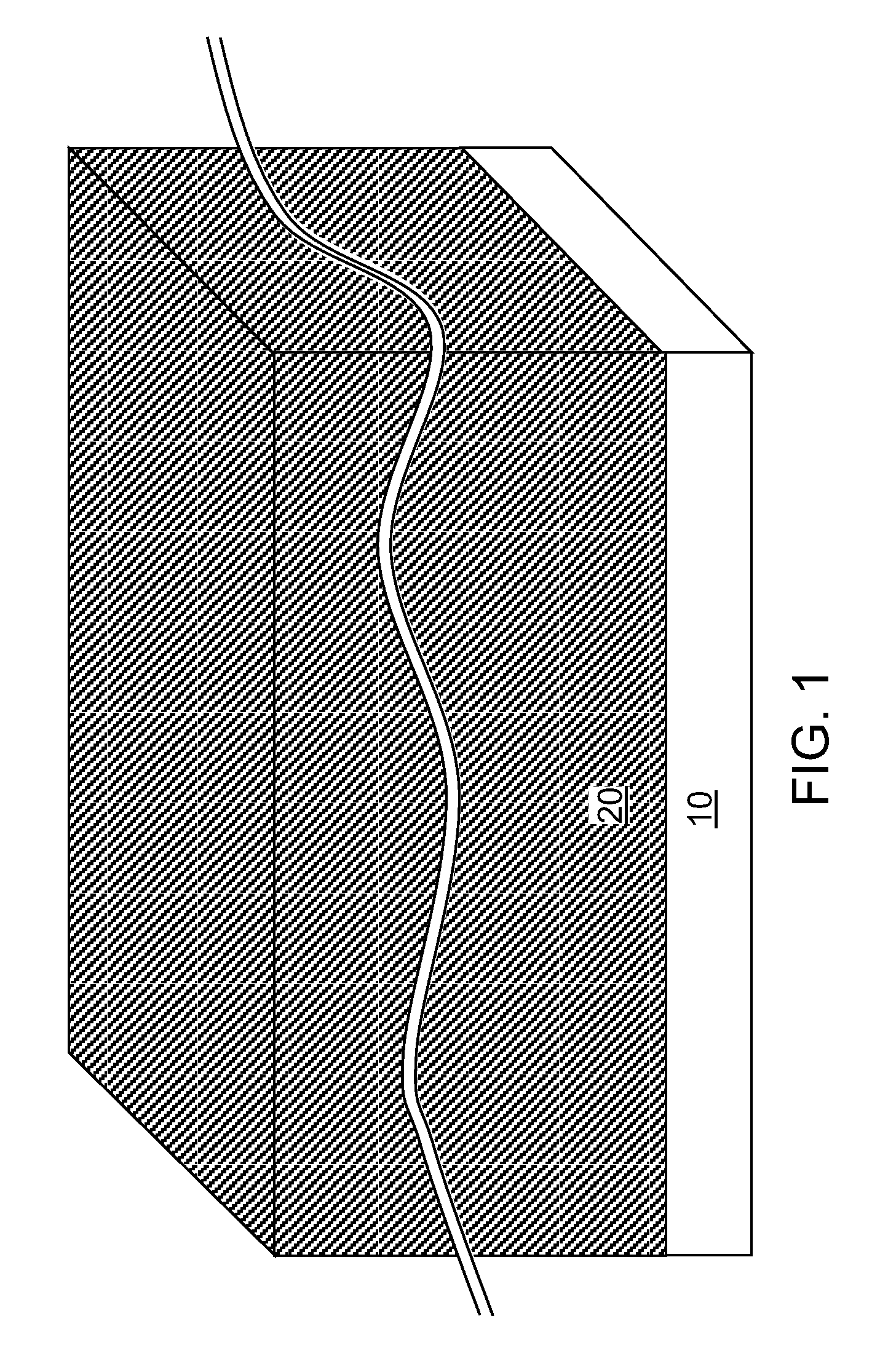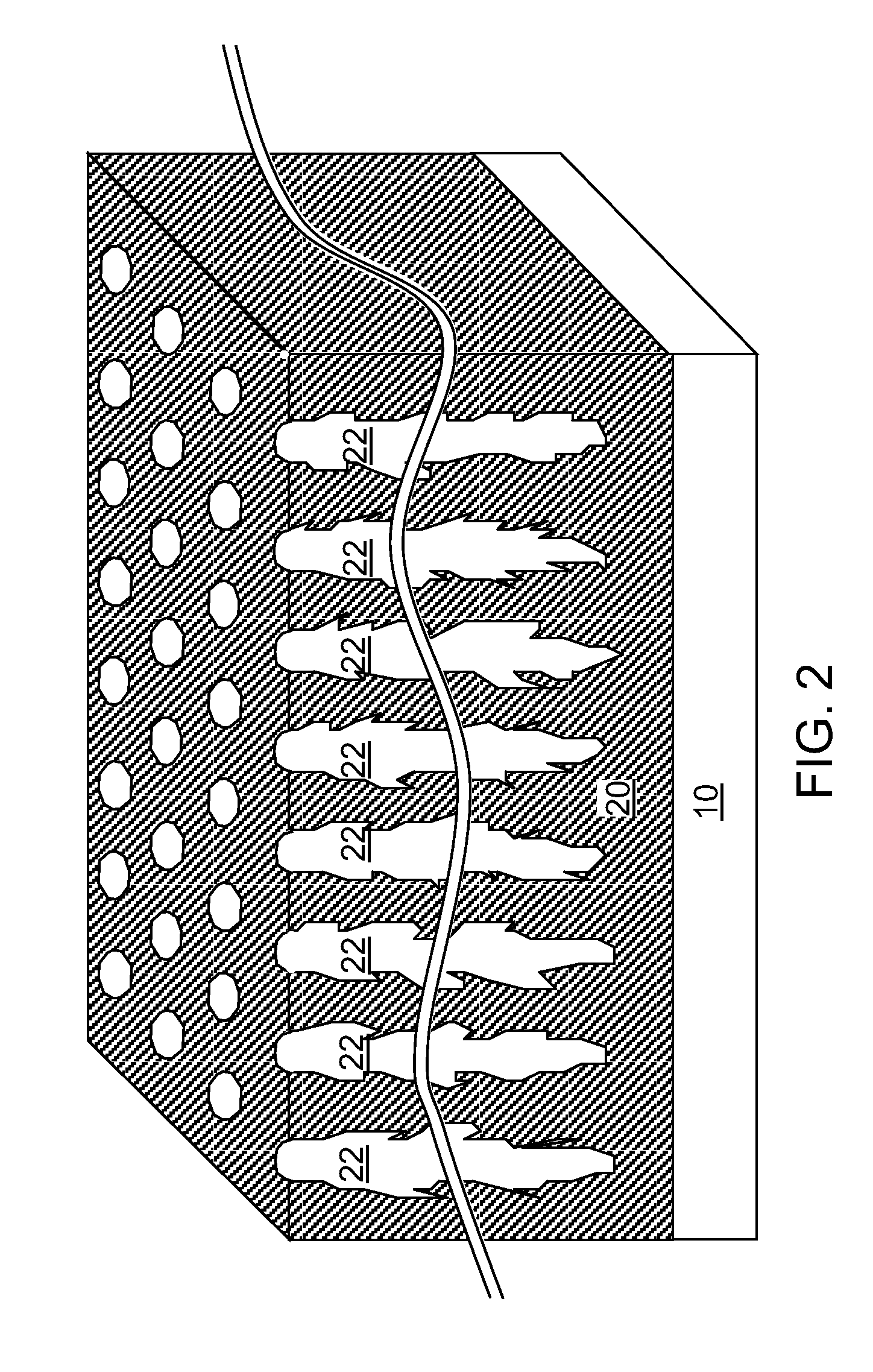Multijunction hybrid solar cell incorporating vertically-aligned silicon nanowires with thin films
a solar cell and nanowire technology, applied in the field of photovoltaic devices, can solve the problems of high production cost, high production cost, and severely limited applicability of such solar cells, and achieve the effects of enhancing photon absorption, reducing contact resistance, and high efficiency
- Summary
- Abstract
- Description
- Claims
- Application Information
AI Technical Summary
Benefits of technology
Problems solved by technology
Method used
Image
Examples
first embodiment
[0033]Referring to FIG. 1, a first exemplary structure according to the present disclosure includes a substrate, which includes a silicon layer 20 having a first conductivity type and a first conductive material layer 10. The substrate can consist of a stack of the first conductive material layer 10 and the silicon layer 20, or can further include at least another layer located at the bottom of the first conductive material layer 10 such as a dielectric substrate (such as a glass substrate or any other dielectric substrate) or another conductive material layer. For example, the first conductive material layer 10 can be a metallic layer including a metallic material. The metallic material can be aluminum, copper, or any other elemental metal or a conductive metallic alloy. The first conductive material layer 10 is a first conductive plate that functions as a first electrode of a photovoltaic device to be formed.
[0034]The silicon layer 20 includes silicon and at least one dopant havin...
second embodiment
[0061]Referring to FIG. 8, a second exemplary structure according to the present disclosure is derived from the first exemplary structure of FIGS. 2 and 2 A by depositing an intrinsic semiconductor material layer 30 directly on surfaces of the array of nanopores 22 and the planar top surface 20T of the silicon layer 20. The intrinsic semiconductor material layer 30 includes an intrinsic semiconductor material.
[0062]The intrinsic semiconductor material in the intrinsic semiconductor material layer can include silicon, germanium, a silicon-containing alloy that may contain carbon or germanium, a germanium-containing alloy that may contain carbon or silicon, and / or a compound semiconductor material. The intrinsic semiconductor material can be a hydrogenated semiconductor material in which the hydrogen atoms reduce the dangling bonds of semiconductor atoms therein.
[0063]The intrinsic semiconductor material layer 30 can be deposited by an electrodeposition process employing a non-aqueous...
PUM
 Login to View More
Login to View More Abstract
Description
Claims
Application Information
 Login to View More
Login to View More - R&D
- Intellectual Property
- Life Sciences
- Materials
- Tech Scout
- Unparalleled Data Quality
- Higher Quality Content
- 60% Fewer Hallucinations
Browse by: Latest US Patents, China's latest patents, Technical Efficacy Thesaurus, Application Domain, Technology Topic, Popular Technical Reports.
© 2025 PatSnap. All rights reserved.Legal|Privacy policy|Modern Slavery Act Transparency Statement|Sitemap|About US| Contact US: help@patsnap.com



